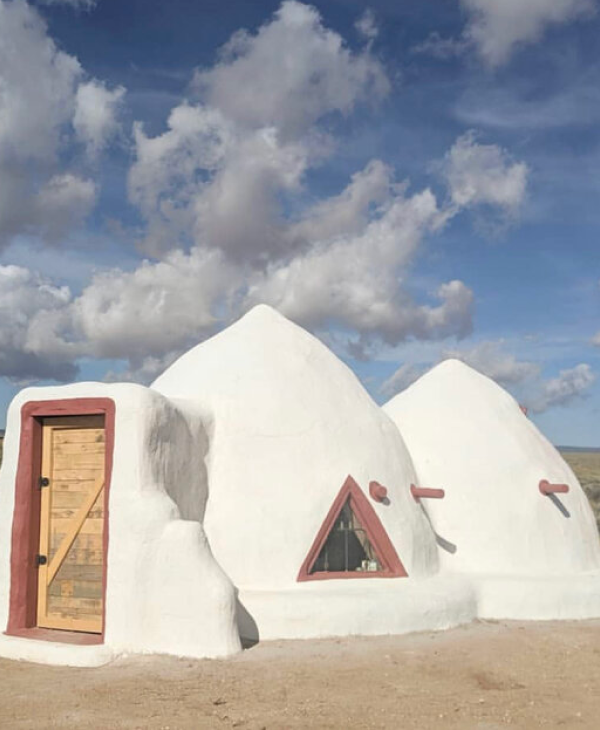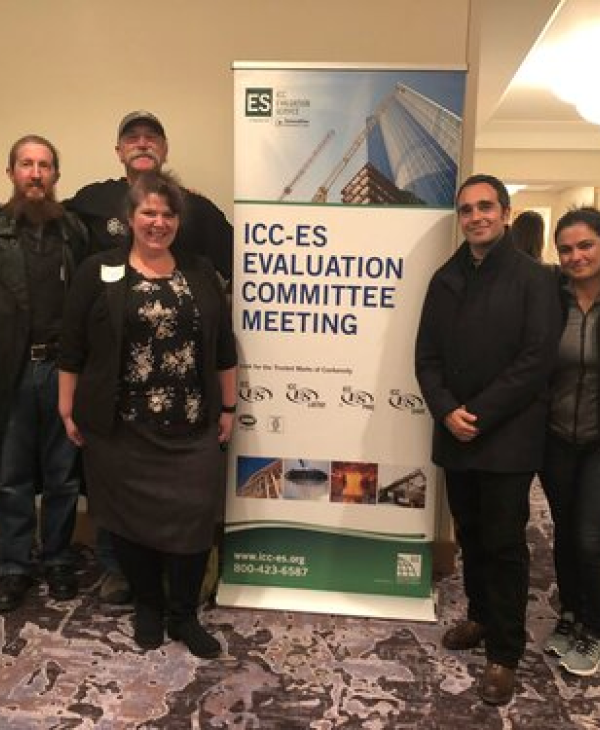Harry’s dome home in the desert is what dreams are made of. Read about his process for acquiring land and the unique features that make this home affordable and sustainable.
How did you learn to build using the SuperAdobe method?
I learned at CalEarth of course! That, along with many online resources and a few books.
Describe your experience with CalEarth. Which workshop(s) did you attend?
My experience at CalEarth was wonderful! It was just a 4-day workshop, but the people I met and the education I received was phenomenal. I knew a lot about earthbag building before attending, but was still surprised at how much I learned. The method is simple enough to teach in one afternoon, at least the basics of it, but the possibilities of what can be done with earthbag are endless. I don’t think I’ll ever be done learning. It would have benefited me greatly to have taken an extended workshop before breaking ground. There are a lot of things I could have done better looking back on it, but at the time, I couldn’t wait. The season was right and I already owned the land. Can you blame me?
How long did it take to build your home in Taos, New Mexico? How much did it cost?
In total, my house took 108 days to build. Filling and laying the bags took 60 days after digging the foundation and before applying the plaster. I lived on site the whole time and worked almost every day. For two months I lived in a tent, and then once I finished the bedroom dome, I started living in that. The total cost of materials was $2,101.
Quick breakdown: $700 for bags, $450 for pond liner, $415 for barbed/chicken wire, $287 for cement/lime/paint, and $249 for wood and glass and other accessories. These numbers don’t include the cost of tools since I got them mostly secondhand or for free. It also doesn’t include water, which cost me $250 for ~800 gallons because I paid a guy to haul it in for me.

What were your biggest challenges when building this structure?
The soil is tough. The top few feet is 100% clay and below that lies even tougher material called “caliche” which is volcanic ash that acts as a naturally forming type of concrete. Not as hard as a paved road, but it takes some serious heft to get through it. I never complained though, because I couldn’t ask for better materials. I was happy to break my back digging the stuff up. As a ceramics artist, I never have to buy clay again. I can just scoop it out of my yard.
Bagging was easier than digging, mud plaster was easier than bagging, stucco was easier than mud plaster, and painting was obviously a breeze. Every step of the process is easier than the last, so keep your head up!
Provide some detail about the design of this building. What features does it include?
The building is simple, just two appended domes. The main room is 4m (12’) in diameter and has a 3m (9’) bedroom attached. The long doorway is actually a staircase that goes down into the house which sits one meter underground. A bench lines the outside perimeter; it acts as a buttress and a place to sit (a “butt rest” if you will). I originally planned on having circular windows, but I settled on triangles because frankly they’re easier to make. And I love the look of them! The bedroom has no windows, which I designed intentionally; into it enters no light, no sound, and no cell reception. I sleep like a rock. It’s heavenly.
Your home is partially built underground. Why did you choose to build this way?
As I was designing my house, I visualized the building process and imagined it would take a great deal of earth to fill up the bags, none of which I’ll be bringing in from off-site, so I said to myself, “I’m going to dig a giant hole - why not incorporate it into the design!” And so I decided to go subterranean. The volume from the foundation was nearly enough to build my whole house, and the earth around it gives the structure additional support. Genius!
Living underground provides unbelievable insulation. Even on 90 degree days, I wear a sweater when I’m inside. I don’t need air conditioning. I don’t even need a fridge! I buried a cooler in the ground and it keeps my food fresh for a week without ice. And during the cold nights, a tiny fire will turn the place into a sweat lodge. Why isn’t everyone living like this?
Some people pay more for air conditioners than I did for my whole house. I can’t believe that.
Do you have neighbors? What do they think of your dome home?
The area is sparsely populated with other off-gridders who dwell in trailers, pre-fab homes, earth ships, school busses, teepees, adobe, strawbale, pallet, and anything else you can imagine. Some full time, some seasonal. My closest neighbors are full time residents with a real address! They’re very friendly and very impressed by the speed and low cost it took me to build my house. I left them a key with the invitation to make themselves at home in case a tornado threatens the area.

What do you wish people knew about SuperAdobe that might be surprising?
It’s hard work! It takes a great deal of sweat and muscle to sculpt a house out of earth. My motto for the summer was, “I don’t have the money to buy a house, but I have the strength to build one!” But that's expected.
I will preach forever about how affordable, sustainable, and indestructible earthbag is. I want the world to know. The materials and labor can be found locally anywhere. Any able-bodied person can build their way into homeownership with the earth under their feet!
The hardest part is getting a permit.
If you could describe your SuperAdobe home in one word, what would it be?
Sensible. An earthbag house is affordable, sustainable, efficient, low impact, simple, elegant, and beautiful. It empowers the individual. It’s fireproof, earthquake proof, hurricane proof, bullet proof, and so well insulated! Sensible is the word. It just makes sense.
Continue to follow Harry’s adventures here: https://homeydome.tumblr.com




